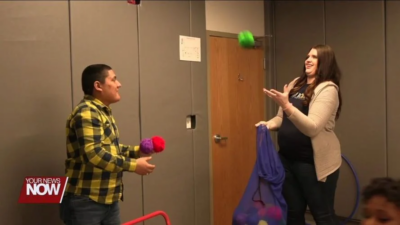LIMA, OH (WLIO) – April is Autism Awareness Month. Our Bethany Ulrick spoke to experts at High Road School of Lima to learn more about what makes individuals with autism unique.
 Autism awareness has come a long way in the past decade, partly thanks to the inclusion of characters on the spectrum in TV and movies. But it’s important to realize those portrayals don’t apply to everyone, and individuals with autism can be anywhere from nonverbal to highly talented members of society.
Autism awareness has come a long way in the past decade, partly thanks to the inclusion of characters on the spectrum in TV and movies. But it’s important to realize those portrayals don’t apply to everyone, and individuals with autism can be anywhere from nonverbal to highly talented members of society.
“People get that picture and then they overgeneralize and assume that that’s what autism is when in reality we know it’s this huge spectrum and it doesn’t look like “The Good Doctor” or “Rain Man” or things like that they’ve seen on TV but it is a wide spectrum and our kids have so many abilities to share with us,” explained Lauren Hattery, board certified behavior analyst, High Road School of Lima.
Part of what makes individuals with autism who they are is how they think and learn in a different way than others around them.
“They have very much attention to detail, they’re trying to figure things out a step ahead, they might be honing in on different things, they might need to utilize some visuals to understand things a little bit more,” said Karis Thines, program director of High Road School of Lima.
Another common trait is their tendency to have “special interests”. They often have a small number of hobbies or subjects that they devote more time to and effort than most people.
“They will learn every fact and opinion, some of them, about that interest and they can tell you things that you never even dreamed of knowing about those subjects- trains, video cameras, taking apart computers and putting them back together,” stated Thines.
Though people with autism have a wide range of different needs, they all have something in common- the need for the same basic respect you’d show anyone else.
“People are just people and that you need to treat them as people and whoever they are, just listen to them, listen to what they’re asking for, listen to what they’re saying, validate their feelings, their emotions, in what they’re telling you,” added Thines.
